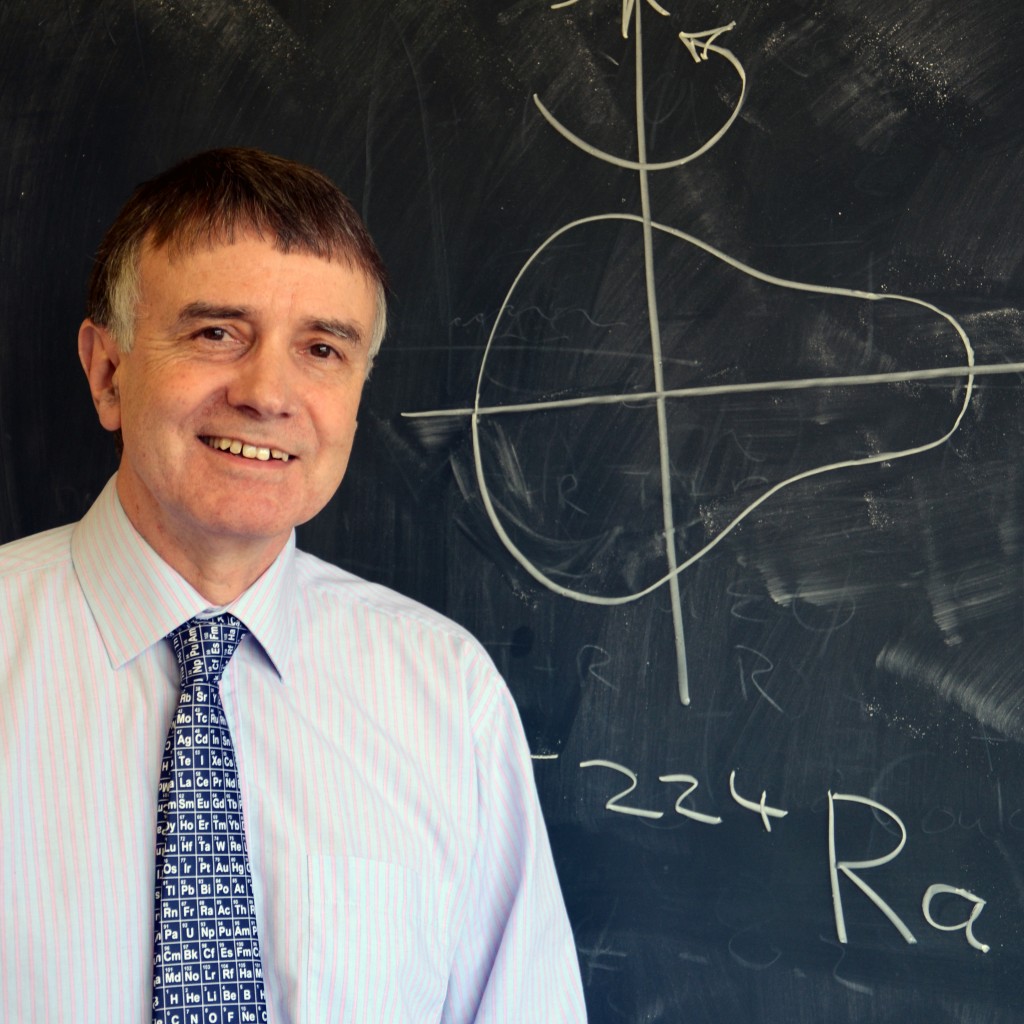Professor Peter Butler: “Our findings contradict some nuclear theories and will help refine others”
Scientists at the University of Liverpool have shown that some atomic nuclei can assume the shape of a pear which contributes to our understanding of nuclear structure and the underlying fundamental interactions.
Most nuclei that exist naturally are not spherical but have the shape of a rugby ball. While state-of-the-art theories are able to predict this, the same theories have predicted that for some particular combinations of protons and neutrons, nuclei can also assume very asymmetric shapes, like a pear where there is more mass at one end of the nucleus than the other.
Electric dipole moments (EDM)
The experimental observation of nuclear pear shapes is important for understanding the theory of nuclear structure and for helping with experimental searches for electric dipole moments (EDM) in atoms.
The Standard Model of particle physics predicts that the value of the EDM is so small that it lies well below the current observational limit. However, many theories that try to refine this model predict EDMs that should be measurable.
In order to test these theories the EDM searches have to be improved and the most sensitive method is to use exotic atoms whose nucleus is pear-shaped. Quantifying this shape will therefore help with experimental programmes searching for atomic EDMs.
The shape of 224Ra deduced from the CERN measurements
Professor Peter Butler, from the University’s Department of Physics who carried out the measurements, said: “Our findings contradict some nuclear theories and will help refine others. The measurements will also help direct the searches for atomic EDMs currently being carried out in North America and in Europe, where new techniques are being developed to exploit the special properties of radon and radium isotopes.
“Our expectation is that the data from our nuclear physics experiments can be combined with the results from atomic trapping experiments measuring EDMs to make the most stringent tests of the Standard Model, the best theory we have for understanding the nature of the building blocks of the universe.”
Most nuclear isotopes predicted to have pear shapes have been out of reach of experimental techniques to measure them.
Electromagnetic impulse
Now, at the ISOLDE facility at CERN, beams of very heavy, radioactive nuclei can be produced in high-energy proton collisions with a uranium carbide target. They are then selectively extracted using their chemical and physical properties before being accelerated to 8% of the speed of light and allowed to impinge on a target foil of isotopically pure nickel, cadmium or tin.
When this happens the relative motion of the heavy accelerated nucleus and the target nucleus creates an electromagnetic impulse that excites the nuclei. By studying the details of this excitation process it is possible to understand the nuclear shape.
This method has been used successfully to study the shape of short-lived isotopes 220Rn and 224Ra. The data show that while 224Ra is pear-shaped, 220Rn does not assume the fixed shape of a pear but rather vibrates about this shape.
The findings are published in Nature.



i think that these experiments are fantastics.i believe that the violation of cp is correct as well as the violation of T.then the antimatter couldn’t exist in the universe,and the antiparticles are seen by the symmetry of spacetime continuum,through the
operator pt-that is broken-then there appear the lorentz’s invariance( being the space and time variables with the speed)
Then the antiparticles are “holes” of energy locally bunched
,given by the variations of spacetime with the variations od speeds nearest the speed of light.the property of speed of light as constant and limit are due the PT-symmetry breaking,that is equivalent to the conservation of cp to strong interactions
then the violation of cp and T is inserted in the pears shaped nucleus